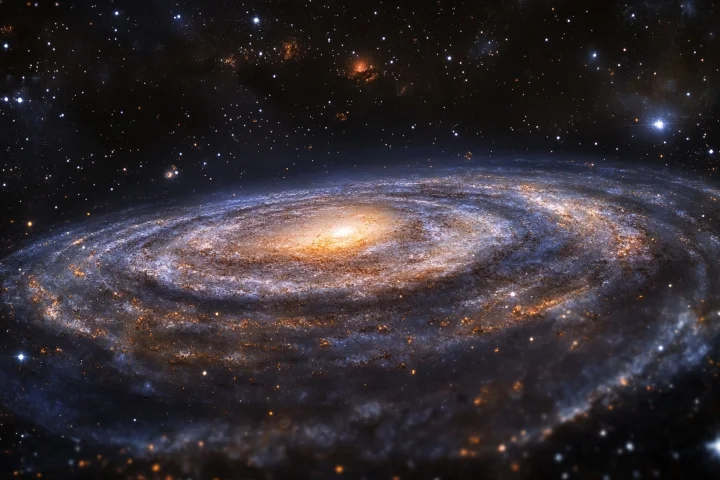
Dark Matter’s Shocking Origin: From Light Speed to Frozen Darkness? A New Theory Unveiled
What if the elusive dark matter, the invisible force shaping our universe, wasn't always 'dark' and 'matter'? A groundbreaking new theory from Dartmouth researchers suggests it may have started as massless particles zooming at light speed, before undergoing a dramatic transformation.
This radical idea proposes that these high-energy particles collided, cooled, and abruptly gained mass through spin interactions, becoming the heavy, slow-moving particles we now recognize as dark matter. The implications are significant: this model not only provides a potential explanation for this cosmic metamorphosis but also offers testable predictions based on the cosmic microwave background (CMB).

A Cosmic Makeover: From Light to Lumps
"Dark matter started its life as near-massless relativistic particles, almost like light," explains Robert Caldwell, a professor of physics and astronomy at Dartmouth and the senior author of the paper. This notion is a complete departure from the conventional understanding of dark matter as cold, heavy clumps.
The researchers, including first author Guanming Liang ’25, detail their theory in Physical Review Letters. They propose that in the chaotic early universe, vast numbers of these light-like particles bonded together, drawn by opposing spins akin to magnets. As the universe cooled, an imbalance in these spins caused a sharp energy drop, solidifying them into the cold, heavy dark matter particles.
Superconductivity: An Unexpected Inspiration
Intriguingly, the researchers drew inspiration from superconductivity. They introduce a theoretical particle that would have triggered the transformation to dark matter, referencing the behavior of electrons forming Cooper pairs in superconductors as evidence that massless particles can indeed condense into dark matter.
"We looked toward superconductivity for clues as to whether a certain interaction could cause energy to drop so suddenly," Caldwell explains. "Cooper pairs prove that the mechanism exists."
The CMB: A Potential Witness
The researchers emphasize that their theory is testable. According to their model, these transformed particle pairs would have entered a cold, nearly pressureless state, leaving a unique signature on the CMB. Existing and future data from projects like the Simons Observatory in Chile and CMB Stage 4 could potentially confirm or refute this theory.

"It's exciting," Caldwell states. "We're presenting a new approach to thinking about and possibly identifying dark matter."
This bold new theory challenges our fundamental understanding of dark matter, suggesting it might have a far more dynamic and surprising origin than previously imagined. Could this be the breakthrough that finally unlocks the secrets of this mysterious substance? The CMB holds the potential answers.
What are your thoughts on this new theory? Do you believe it provides a plausible explanation for dark matter's origin? Share your opinions and insights in the comments below!